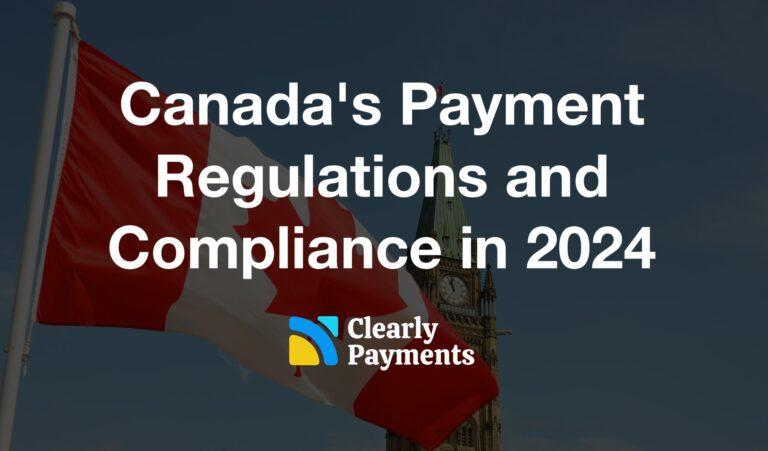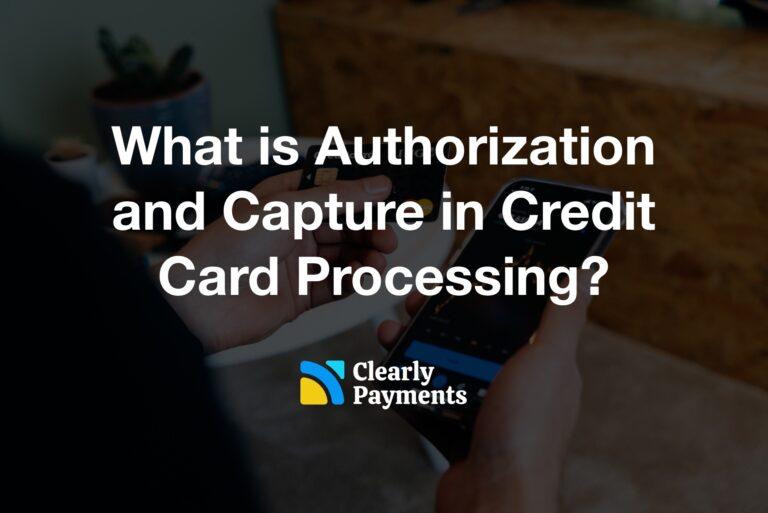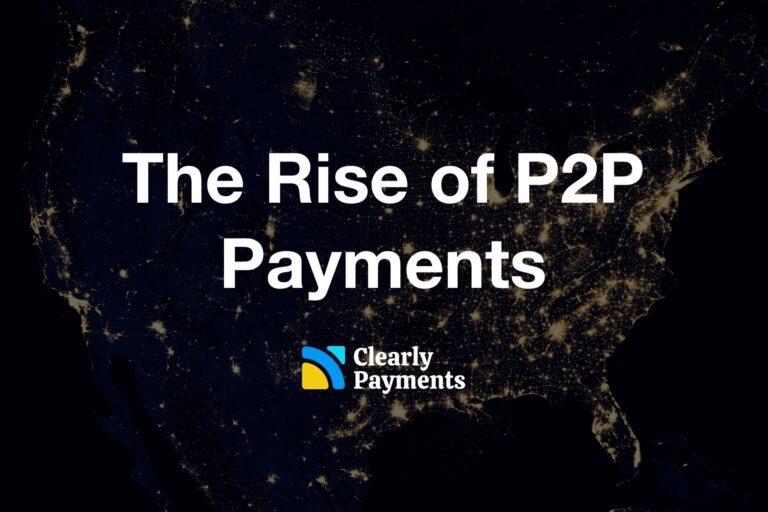Credit card processing has become an essential part of business, allowing businesses to accept electronic payments from customers conveniently. It’s important for merchants to have a clear understanding of how fees work in credit card processing to make informed decisions and effectively manage their financial operations.
In this article, we will go into the details of credit card processing fees, including their types, components, and factors that affect their structure.
Why is there a cost to accept credit cards?
Payment processors invest a significant amount of money to build the necessary infrastructure for securely handling credit card transactions, which includes hardware, software, and network resources. They also employ a team of experts to ensure that all transactions are secure and meet the requirements of credit card associations such as Visa and Mastercard.
In addition to the infrastructure and expertise required to process credit card payments, payment processors also assume a certain level of risk when handling transactions. For example, if a customer disputes a charge or claims that their card was used fraudulently in a chargeback, the payment processor may be required to reverse the transaction and refund the customer’s money.
To mitigate this risk, payment processors charge fees to merchants for each transaction. These fees are typically a percentage of the total transaction value, plus a flat fee per transaction. The specific fee structure varies depending on the payment processor and the type of transaction, but in general, the fees cover the cost of processing the payment, as well as the risk assumed by the payment processor.
It’s also worth noting that payment processing fees are not solely for the benefit of the payment processor. Credit card companies such as Visa and Mastercard also charge fees to payment processors, which are passed on to merchants. These fees are known as interchange fees and cover the cost of running the credit card network, as well as the rewards programs that many credit cards offer. We cover interchange fees more below.
Ultimately, payment processing fees are a necessary cost of doing business for merchants who accept credit card payments. While they can eat into profit margins, the convenience and security that credit card payments offer are often worth the investment. Additionally, by working with a reputable payment processor, merchants can often negotiate lower fees and benefit from additional services such as chargeback protection and fraud detection.
The price merchants pay to accept credit cards
The average amount that merchants pay to accept credit cards can vary depending on several factors, including the size of the business, the industry, the type of card being used, the volume of transactions, and the payment processing provider chosen.
The average overall cost for merchants to accept credit cards generally ranges from around 2% to 3.5% of the transaction amount, depending on the factors mentioned above. The transaction charge is generally between $0.06 and $0.30 per transaction.
However, it’s important to note that this is a general estimate and the actual fees can vary significantly depending on the specific circumstances and negotiations with the payment processor. There are some merchants, such as the high-risk merchant category, where fees can easily go above 5% per transaction.
You can read a more in-depth article on how much credit card processing costs for merchants.
The three main ways payment processors charge
There are three main ways that credit card processors charge fees. They are flat rate, interchange plus (cost plus), and tiered pricing.
In a nutshell, flat rate pricing is the simplest and generally best for small businesses processing below $150,00 per year. Interchange plus pricing is generally the best and most transparent for all merchants processing above $150,000 per year. Tiered pricing is something you should stay away from because it is generally riddled with hidden fees. You can read more about a comparison of flat rate pricing and interchange plus.
Flat rate pricing in credit card processing
Flat rate pricing is a simplified and transparent pricing model used in payment processing that charges merchants a fixed percentage fee for each transaction. Unlike other pricing models where fees can vary based on factors like card type, transaction volume, and interchange rates, flat rate pricing offers a straightforward cost structure.
Under flat rate pricing, merchants are charged a single, fixed percentage fee for all credit card transactions, regardless of the card type or interchange category. This means that whether a customer pays with a basic credit card or a rewards card, the merchant pays the same percentage fee.
For example, a payment processor may offer a flat rate pricing plan of 2.9% and $0.30 per transaction. If a customer makes a $100 purchase, the merchant would be charged a fee of $3.20 (2.5% of $100 plus $0.30).
The primary advantage of flat rate pricing is its simplicity. Merchants can easily calculate their processing costs since the fee percentage is consistent across all transactions. This can be particularly beneficial for small businesses or those with low transaction volumes that may find it challenging to navigate the complexities of interchange-plus pricing.
Once a merchant becomes larger with greater than $150,000 per year in processing, they can generally save a lot more money by switching to a merchant account with interchange plus pricing.
Interchange plus pricing in credit card processing
Interchange plus pricing is a common pricing model used in payment processing that allows merchants to see the exact cost of each transaction. Unlike flat rate pricing, where a fixed percentage fee is charged for all transactions, interchange plus pricing charges merchants the interchange rate set by the card networks plus a markup fee from the payment processor. Interchange Plus is known as the most transparent model for payments, which is why TRC-Parus mostly recommends it.
Interchange fees are the fees charged by the card networks (Visa, Mastercard, etc.) for processing credit and debit card transactions. These fees are typically set as a percentage of the transaction amount plus a fixed per-transaction fee.
Under interchange plus pricing, merchants are charged the actual interchange fee plus a markup fee from the payment processor. The markup fee is typically a percentage of the transaction amount, and it varies based on factors such as the type of card, the transaction volume, and the risk associated with the merchant’s business.
For example, if the interchange rate for a Visa credit card transaction is 1.7% plus $0.10 per transaction, and the payment processor’s markup fee is 0.3%, the total fee charged to the merchant would be 2.0% plus $0.10 per transaction.
The primary advantage of interchange plus pricing is its transparency. Merchants can see the exact cost of each transaction, including the interchange fee and the markup fee charged by the payment processor. This can help merchants better understand their processing costs and make informed decisions about their payment processing solutions.
Interchange plus pricing can also be beneficial for larger merchants with high transaction volumes. You can read a dedicated article on Interchange plus pricing.
Tiered pricing in credit card processing
Tiered pricing is a common pricing model used in payment processing that categorizes transactions into different pricing tiers based on factors such as the type of card, the transaction volume, and the risk associated with the merchant’s business. Each tier has a set fee structure that determines the fees charged to the merchant for each transaction.
There are typically three tiers in a tiered pricing model: qualified, mid-qualified, and non-qualified. However, each processor can determine what fits into each tier, making it difficult to compare rates.
Qualified transactions are those that meet certain criteria, such as being swiped in person or entered manually with all required information. These transactions typically have the lowest fees. Mid-qualified transactions are those that may not meet all of the qualified criteria, such as being keyed in or processed after a certain timeframe. These transactions typically have higher fees than qualified transactions. Non-qualified transactions are those that are considered high-risk or have incomplete information, such as transactions made with rewards cards or international cards. These transactions typically have the highest fees.
Under a tiered pricing model, the fees charged to the merchant for each transaction will depend on the category into which it falls. Many merchants have tiered pricing and we have found that they tend to pay the highest rates, sometimes well over 4%. We recommend avoiding tiered pricing.
The breakup of fees in credit card processing
The primary components of credit card processing fees are interchange fees, card network fees, and processing fees.
Interchange fees are set by the card networks, such as Visa, Mastercard, and American Express, and represent the cost of moving money between banks. The issuing banks get the majority of interchange fees as revenue.
Card network fees are fees such as association fees and card brand fees.
Processing fees, on the other hand, are charged by the merchant’s payment processor or acquirer, and cover the costs of authorizing and settling transactions.
The payment industry has a relatively complex value chain. You can read more about how it works in our payment industry overview.
More details on how interchange fees work
Interchange fees are fees charged by card networks such as Visa, Mastercard, and others for processing credit and debit card transactions. These fees are a percentage of each transaction, and they are paid by the merchant’s bank (also known as the acquiring bank) to the cardholder’s bank (also known as the issuing bank).
There are literally hundreds of interchange fees. They are all published by credit card networks. The number of different interchange rates can vary depending on various factors, including the card network (such as Visa, Mastercard, American Express, etc.), the country or region, the type of card (debit, credit, rewards, etc.), and the specific transaction characteristics. In addition, each country sets its own interchange fees (see interchange fees by country).
Each card network has its own interchange fee structure, and within each network, there are multiple categories or tiers of interchange rates. These categories are typically based on factors such as the type of merchant (e.g., retail, restaurant, e-commerce), the transaction method (e.g., card-present, card-not-present), and the risk associated with the transaction. The card networks publish all the interchange fees. You can review the interchange fees in Canada and the interchange fees in the USA.
As an example, within the Visa network, there are various interchange categories such as consumer credit, consumer debit, commercial, prepaid, and more. Each category has its own specific interchange rates based on factors like transaction volume, transaction amount, merchant type, and how the transaction occurred.
For more information, read our article on how interchange fees work in payments.
Things that change payment processing fees
Several factors can impact the cost of credit card processing fees for merchants, including:
Credit Card Network: Different credit card networks have varying interchange fees, which can affect the overall cost of processing credit card transactions. For example, American Express typically charges higher interchange fees compared to Visa or Mastercard.
Merchant Category: Merchants are typically classified into different categories based on their industry or type of business. The categorization is called MCC (Merchant Category Code). Some categories, such as restaurants or hotels, may be subject to higher processing fees due to the increased risk of chargebacks or fraudulent transactions.
Sales Volume: Merchants who process higher volumes of credit card transactions may be eligible for lower processing rates from their payment processor or acquirer. These volume discounts can help reduce the overall cost of credit card processing fees.
Payment Method: Some payment methods, such as in-person transactions vs online transactions, may be subject to lower interchange fees. Transactions known as EMV transactions have lower rates because they are lower risk. Merchants who can incentivize customers to use these lower-cost payment methods can reduce their overall processing fees.
Payment Processor: The payment processor or acquirer used by a merchant can also impact the cost of credit card processing fees. Different processors may have different pricing models or fee structures, so it’s important for merchants to compare options and choose a provider that offers competitive rates and transparent pricing.
Ways to reduce your credit card processing fees
As a business owner, you know that accepting credit cards comes with fees that can eat into your profits. These fees typically include a fixed transaction cost and a percentage cost of the total sale amount, with the fixed transaction fee ranging from $0.05 to $0.35 per transaction and the percentage fee ranging from 2% to 5%. This range can be substantial, especially for businesses processing a high volume of transactions.
Fortunately, there are several things you can do to reduce your credit card processing fees and keep them on the low end of the range. Here are some tips:
Choose the right payment processor. It’s essential to work with an honest and fair payment processor that won’t try to maximize your fees or make it difficult for you to switch to a new processor. Be on the lookout for payment processors that are hard to get a hold of, have long contracts with large cancellation fees, increase rates twice per year, charge high monthly fees or made-up fees, or lease credit card machines. By working with a reputable payment processor, you’ll be able to maximize your chances of getting the lowest fees possible. If you really want the best rates, work with TRC-Parus.
Do as many face-to-face transactions as possible. While online transactions are necessary, they are considered higher risk, resulting in higher interchange fees. To reduce your fees, conduct credit card transactions with the card physically present whenever possible. These “card present” transactions are less expensive than “card not present” transactions.
Use interchange plus pricing. Payment processors charge fees in different ways, and interchange plus pricing is one of the most transparent pricing models. This pricing model passes through the interchange rates and adds a markup, allowing you to easily understand what your markup is. This is the recommended pricing model by the Canadian Code of Conduct. Flat rate pricing, on the other hand, is a transparent model that doesn’t save you money and can be quite expensive for businesses processing over $150,000 per year.
Encourage lower-fee credit cards. Certain credit cards have higher fees, and encouraging customers to use lower-fee cards, such as Visa or MasterCard, can help reduce your fees. Business credit cards and rewards credit cards have higher fees than basic credit cards, with the difference in price sometimes as much as double.
Use debit cards when possible. Debit cards have a much lower transaction fee of around $0.05 per transaction compared to credit cards. Debit card prices vary greatly in Canada vs USA. Encouraging customers to use debit cards can significantly reduce your costs. However, keep in mind that credit card purchases tend to be higher than debit card purchases, so you don’t want to discourage credit card use entirely.




